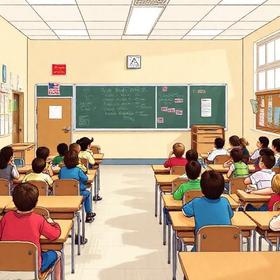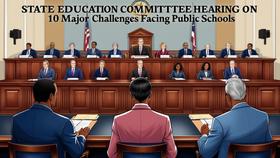Public School Demographics & Inclusion: Trends for 2025
As public schools navigate an ever-changing social landscape, 2025 brings with it notable trends in demographics and inclusion. Rising diversity, shifting enrollment patterns, and debates over diversity, equity, and inclusion (DEI) are shaping the conversation in districts across the United States. This article examines key data points and emerging dynamics that parents, educators, and stakeholders should watch.
1. Changing Enrollment Patterns: A Slow but Steady Shift
1.1 Enrollment Remains Below Pre-Pandemic Levels
According to the National Center for Education Statistics (NCES), public school enrollment held nearly steady from fall 2022 to fall 2023 at 49.5 million students, but remains 2.5% below the pre-COVID peak in 2019.
Elementary and middle grade enrollment declined most sharply, while high school (grades 9–12) saw a slight increase.
These demographic shifts matter because declining enrollment can influence school funding, staffing, and district planning.
1.2 Regional Divergence in Enrollment Trends
Districts in fast-growing regions—such as parts of the Sun Belt and Southeast—are under pressure to expand capacity or rezone due to uneven population growth. Public School Review
By contrast, many rural or inland districts in the Rust Belt and West are seeing sharper enrollment drops, creating fiscal stress.
2. Increasing Racial and Ethnic Diversity
2.1 Long-Term Demographic Shifts
The racial and ethnic composition of public schools continues to evolve:
Between fall 2012 and fall 2022, the share of Hispanic students rose from 24% to 29%, while White student enrollment declined from 51% to 44%.
As of fall 2023, NCES data shows:
White: ~43.7%
Hispanic: ~29.5%
Black: ~14.9%
Asian: ~5.6%
Two or more races: ~5.1% National Center for Education Statistics
2.2 Diversity Scores Across States
PublicSchoolReview's 2025–26 data reveals an average diversity score of 0.70 for U.S. public schools, with substantial variation by state.
States like Hawaii rate at the top with a score of 0.80.
In contrast, more homogenous states such as West Virginia score as low as 0.22.
3. Inclusion and Integration: Promise and Challenges
3.1 Segregation Remains a Concern
Despite increasing diversity, many public schools remain segregated by race, ethnicity, and socioeconomic status. Recent research suggests that merging school attendance boundaries could be a promising policy lever to promote integration:
A 2025 study found that pairing or tripling schools via boundary changes could reduce racial/ethnic segregation by a median of 20%, and even more in some districts — though it might modestly increase students’ commute times.
3.2 Policy and Political Tensions Around DEI
The expansion of DEI initiatives is being met with political pushback in some places:
In 2025, the U.S. Department of Education launched an “End DEI” portal that allows public reporting of DEI-related practices in K–12 schools. Reuters
Meanwhile, a federal judge blocked portions of Mississippi’s law restricting DEI discussions and training in public schools, highlighting ongoing legal and ideological friction.
4. Socioeconomic and Educational Equity Gaps
4.1 Resource Disparities Persist
Greater racial diversity does not always translate to equity in resources or outcomes:
Schools with higher concentrations of minority students often contend with fewer experienced teachers, limited access to advanced coursework, and tighter budgets.
Declining enrollment in some districts amplifies these challenges as funding models tied to per-pupil allocations become less sustainable.
4.2 Representation Among Educators
While student populations are diversifying, the teaching workforce has lagged behind historically. As the NAACP notes, many teachers and school leaders remain disproportionately white compared to the student body.
This mismatch can affect both academic experiences and students’ sense of inclusion and belonging.
5. Inclusion in Action: District-Level Examples
5.1 Urban Diversity and Growth
Prince George’s County Public Schools (Maryland): As of September 2024, the student population is majority Black (51.3%) and significant Hispanic (40.1%), with White students making up under 4%.
District of Columbia Public Schools: In the 2023–24 school year, approximately 55% of students were Black, 22% Hispanic, and 18% White. Wikipedia
These districts illustrate how diverse enrollment interacts with challenges of equity, inclusion, and resource allocation at the local level.
6. Looking Ahead: What to Expect into Late 2025
| Trend | Implication |
|---|---|
| Continued diversification | Districts must adapt curricula, staffing, and community engagement to reflect changing student identity landscapes. |
| Enrollment declines in some regions | Budget pressures may force consolidation, redistricting, or school closures. |
| Debate over DEI policy | Legal and political battles are likely to persist, influencing DEI implementation at the district level. |
| Integration strategies like boundary merging | Could reduce segregation, but require careful planning and community input. |
| Disparities in educator diversity | Calls for more recruitment, training, and retention practices to align teacher demographics with students. |
Conclusion
In 2025, public school demographics in the U.S. continue to reflect a nation in transition. While rising diversity offers opportunities for more inclusive and representative learning environments, significant challenges remain around equity, integration, and political backlash. For parents, educators, and policymakers, understanding these trends is critical: only by grappling with the full picture can stakeholders work toward public schools where diversity is not just present but meaningfully embraced.















